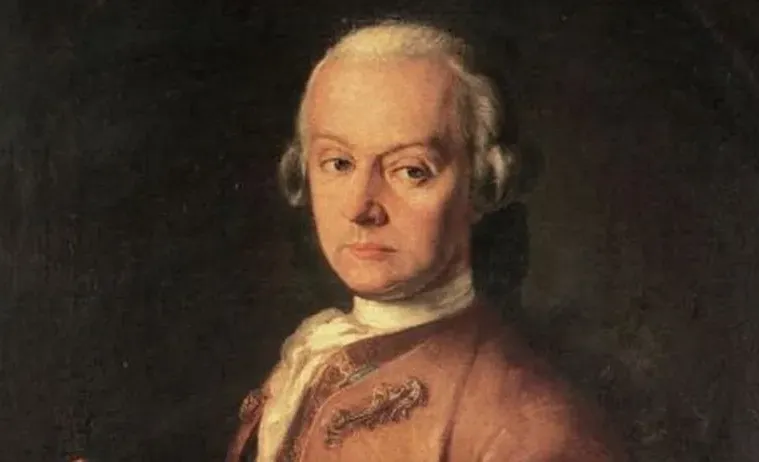Wolfgang Amadeus Mozart, a name synonymous with musical genius, left an indelible mark on the world of classical music. His symphonies, in particular, stand as masterpieces that continue to captivate audiences centuries after they were composed. In this article, we will delve into the realm of Mozart’s symphonic works, exploring the intricacies, historical context, and enduring significance of some of his most famous symphonies.
Symphony No. 40 in G Minor, K. 550: The Symphony of Passion
Mozart’s Symphony No. 40 in G Minor, often referred to as the “Great G Minor Symphony,” is a testament to the composer’s unparalleled ability to evoke deep emotions through music. Written in the summer of 1788, this symphony is a prime example of the Sturm und Drang (storm and stress) movement, characterized by intense emotional expression.
The first movement opens with a dramatic motif that sets the tone for the entire symphony. The haunting melody and the sense of urgency permeate throughout the piece, creating a profound emotional impact. Mozart employs rich orchestration and masterful counterpoint, showcasing his ability to weave complex musical textures that resonate with listeners on a visceral level.
Symphony No. 41 in C Major, K. 551: Jupiter Symphony
Known as the “Jupiter Symphony,” Symphony No. 41 in C Major is the culmination of Mozart’s symphonic prowess. Completed in 1788, the same prolific year as Symphony No. 40, this work is a dazzling display of compositional virtuosity.
The nickname “Jupiter” was not given by Mozart himself but aptly captures the grandeur and majesty of the symphony. The final movement, marked by its fugal structure, is a testament to Mozart’s contrapuntal skills. The intertwining melodies and intricate counterpoint in the finale showcase the composer’s deep understanding of the Baroque style, while infusing it with his unmistakable classical elegance.
Symphony No. 25 in G Minor, K. 183: The “Little G Minor Symphony”
Composed when Mozart was just 17 years old, Symphony No. 25 in G Minor is a remarkable early work that foreshadows the brilliance to come. Often referred to as the “Little G Minor Symphony,” it stands out for its brooding intensity and innovative use of the minor key.
The opening movement, with its dramatic and fiery themes, reflects the influence of the Sturm und Drang style prevalent in the mid-18th century. Despite its youthfulness, the symphony exhibits Mozart’s innate ability to craft music that is both emotionally charged and structurally sophisticated. The “Little G Minor Symphony” serves as a harbinger of the composer’s later, more mature works.
Symphony No. 35 in D Major, K. 385: Haffner Symphony
Commissioned for the ennoblement of Sigmund Haffner, Symphony No. 35 in D Major, commonly known as the “Haffner Symphony,” is a jubilant and celebratory work. Composed in 1782, the symphony showcases Mozart’s ability to balance exuberance with refinement.
The first movement opens with a lively theme, and the entire symphony maintains a sense of buoyancy throughout. Mozart’s skillful orchestration, dynamic contrasts, and delightful melodic inventions contribute to the enduring popularity of the Haffner Symphony. It stands as a testament to Mozart’s versatility, as he effortlessly navigates between the profound and the joyful in this masterful composition.
Symphony No. 38 in D Major, K. 504: Prague Symphony
Composed in 1786 during Mozart’s visit to Prague, Symphony No. 38 in D Major, known as the “Prague Symphony,” is a testament to the composer’s connection with the city’s musical tastes. The work is imbued with a sense of drama and grandiosity, fitting for a city known for its love of music.
The first movement opens with a bold and regal theme, setting the tone for the entire symphony. Mozart’s use of orchestral color and his ability to create tension and release contribute to the work’s enduring appeal. The Prague Symphony reflects Mozart’s keen understanding of the audience and his ability to tailor his compositions to specific occasions.
Symphony No. 36 in C Major, K. 425: Linz Symphony
The Linz Symphony, composed in just a few days in 1783 during Mozart’s visit to Linz, Austria, is a testament to the composer’s ability to produce exceptional works under tight deadlines. Symphony No. 36 in C Major, commonly known as the “Linz Symphony,” is a splendid example of Mozart’s melodic inventiveness and structural innovation.
The opening movement is characterized by a graceful and expansive theme that sets the stage for the entire symphony. Mozart’s use of contrasting dynamics, sparkling orchestration, and rhythmic vitality contribute to the work’s enduring popularity. The Linz Symphony is a testament to Mozart’s ability to effortlessly blend innovation with accessibility.
Conclusion
Wolfgang Amadeus Mozart’s symphonies stand as timeless monuments to his genius. From the emotional depth of Symphony No. 40 to the grandeur of the Jupiter Symphony, each work showcases Mozart’s mastery of form, melody, and orchestration. The “Little G Minor Symphony,” the Haffner Symphony, the Prague Symphony, and the Linz Symphony further illustrate the breadth of Mozart’s compositional prowess.
As we continue to marvel at the enduring brilliance of these famous Mozart symphonies, it becomes clear that Mozart’s legacy transcends time and space. His ability to evoke profound emotions, his impeccable craftsmanship, and his capacity to innovate within classical forms ensure that Mozart’s symphonies will continue to enchant and inspire generations of music lovers for centuries to come.

